This post may contain affiliate links. Please read our disclosure policy.
These vegan rice, tomato, and herb stuffed Swiss chard rolls make for a delicious, vegan dinner or side dish
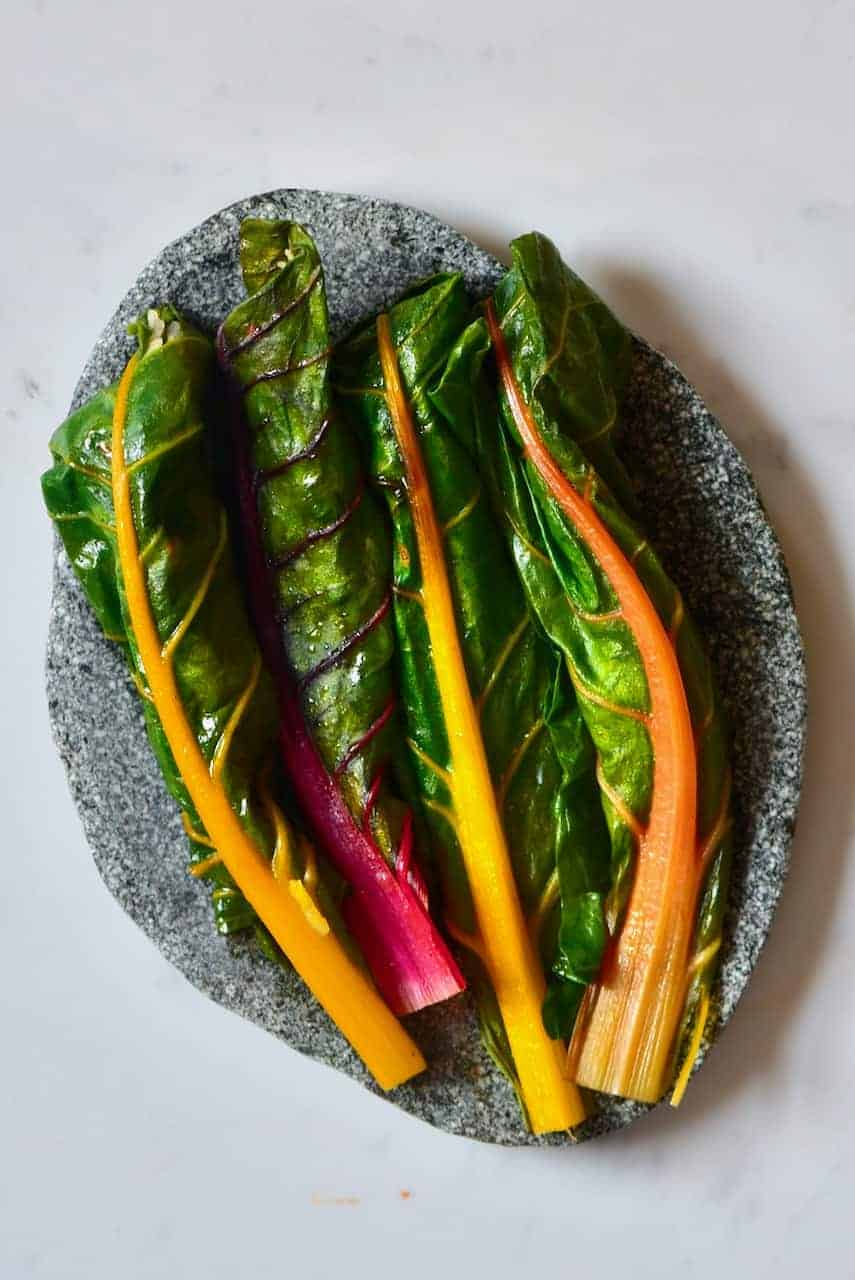
If you’re a fan of vegan stuffed cabbage rolls (or even not), then you have to try this stuffed Swiss chard recipe. Stuffed with a herby tomato and rice filling, these large rainbow Swiss chard leaves make for a wonderfully nutritious appetizer, lunch, or dinner.
While I kept the fillings simple, these chard rolls can also be customized. Just like any vegan cabbage rolls – you can easily add/swap your veggies, grain, and protein of choice into this recipe (i.e. using quinoa for a gluten-free filling). Not to mention that chard leaves also steam into wonderfully tender bites, just like cabbage leaves.
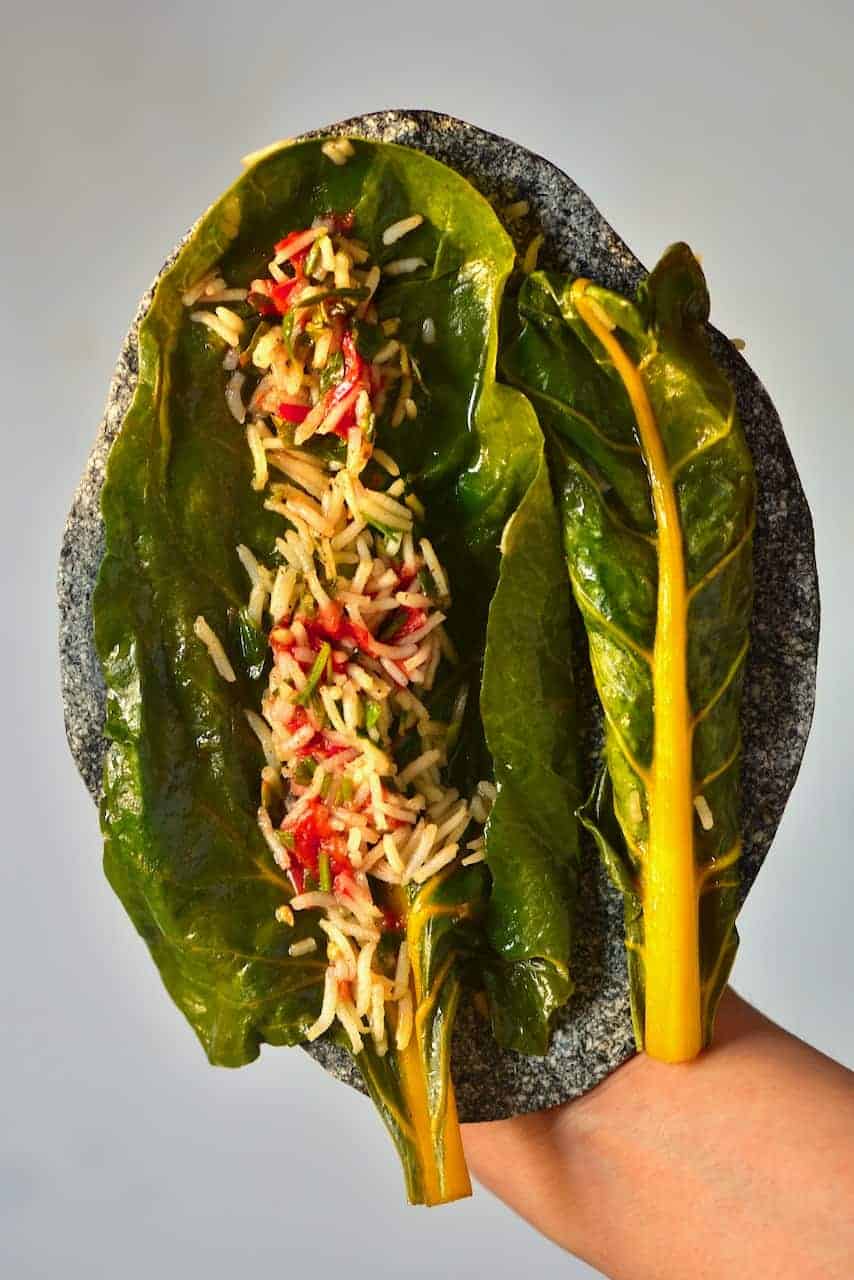
Plus, just look at how gorgeous this rainbow chard is. This is definitely one of the most beautiful leafy greens you can add to your plate.
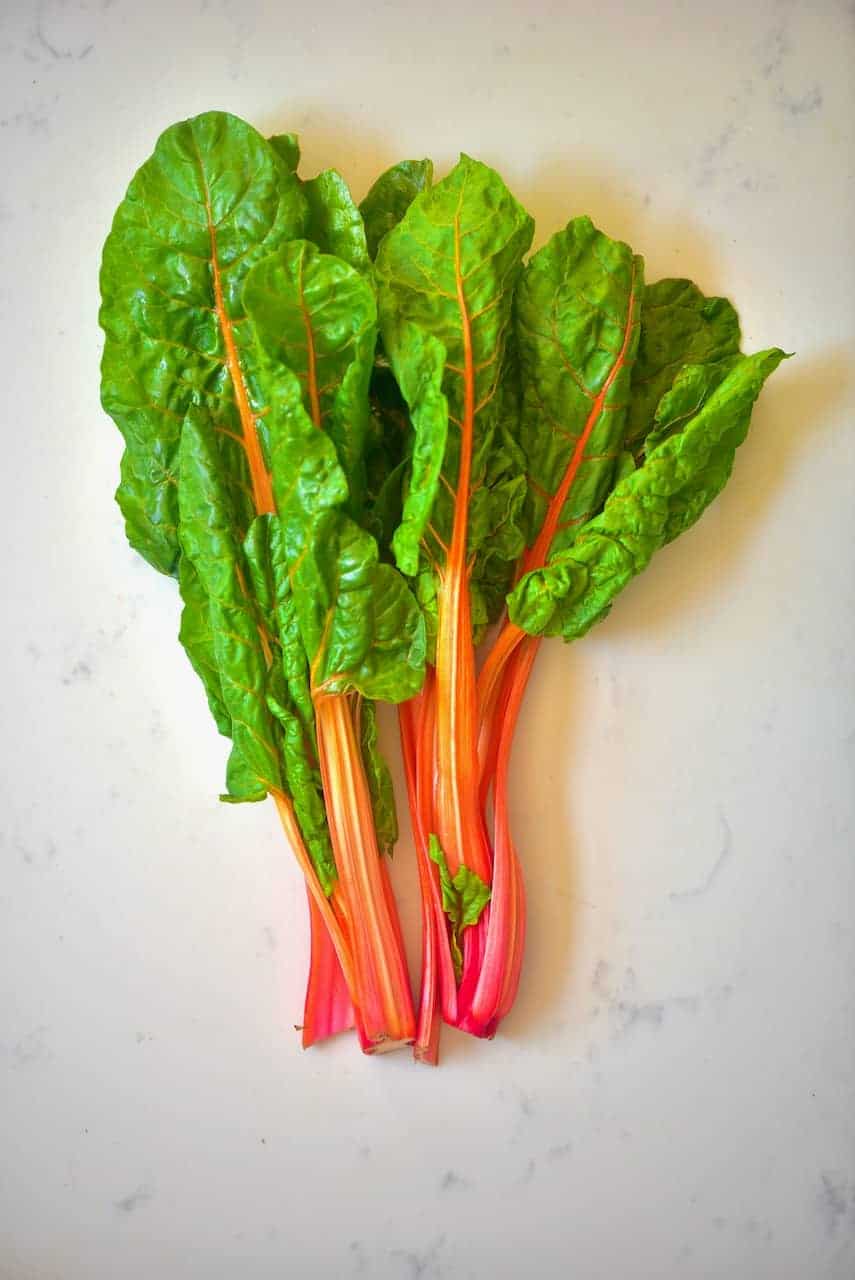
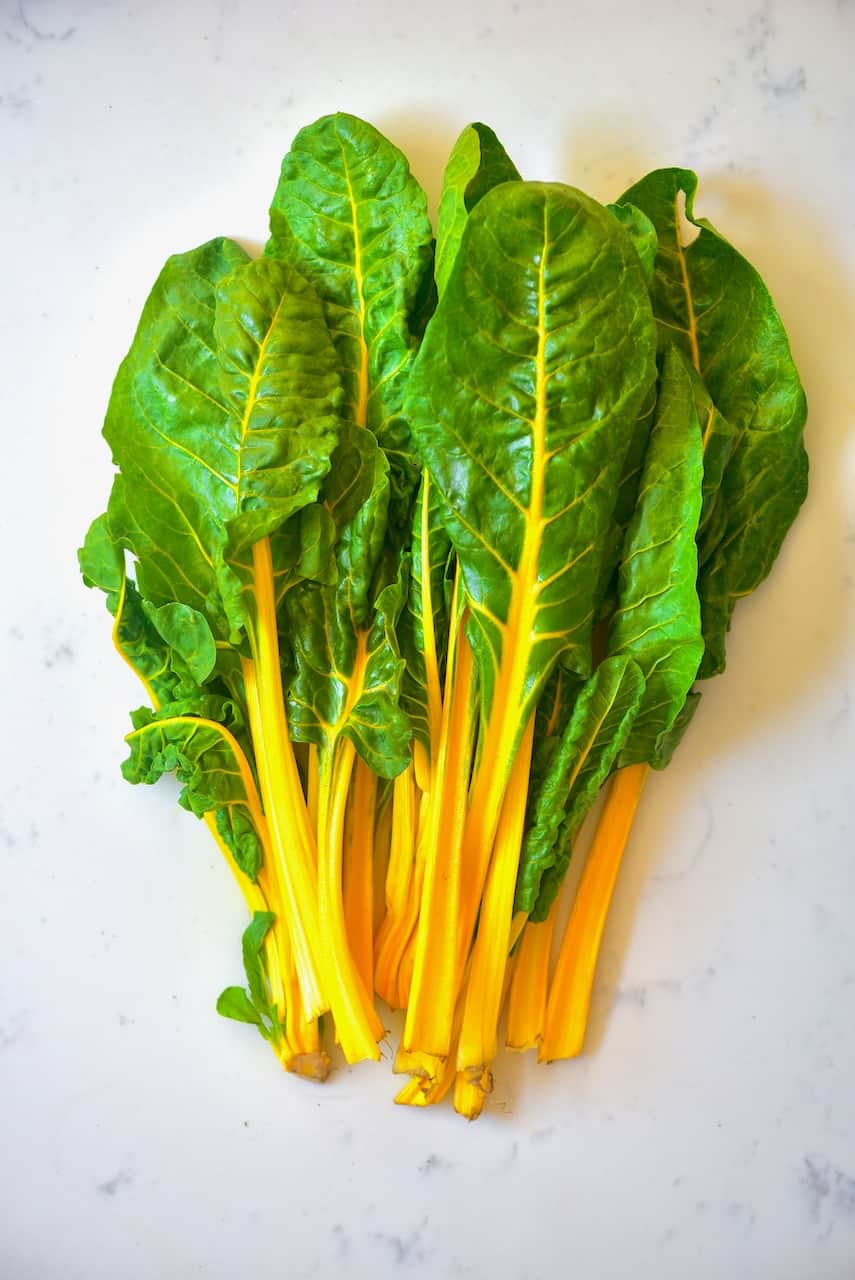
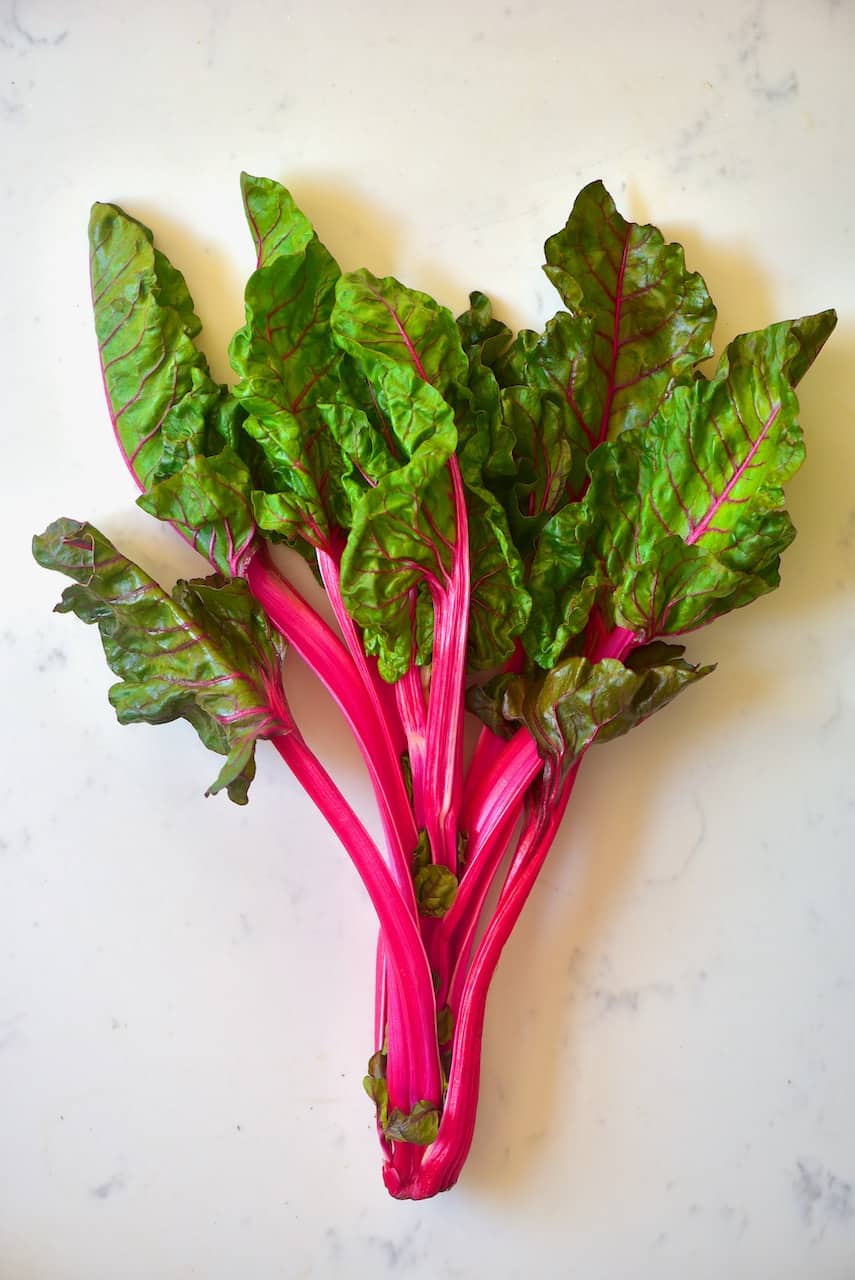
And if you love this recipe, you might be happy to know that this isn’t the only vegan chard recipe on the blog. For another vegan dinner idea, you might like this Lentil Soup with Rainbow Chard.
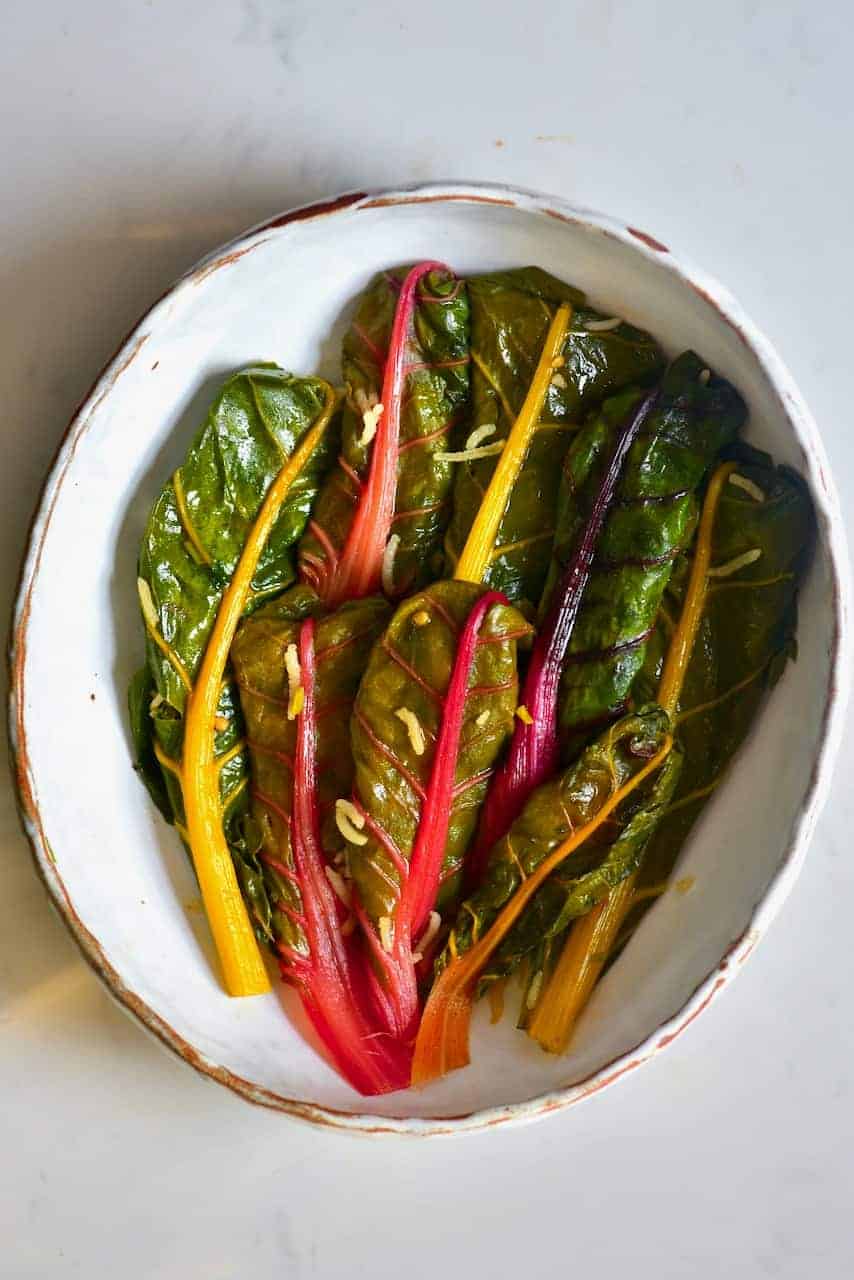
Want to save this recipe?
The Stuffed Swiss Chard How-To
Needed
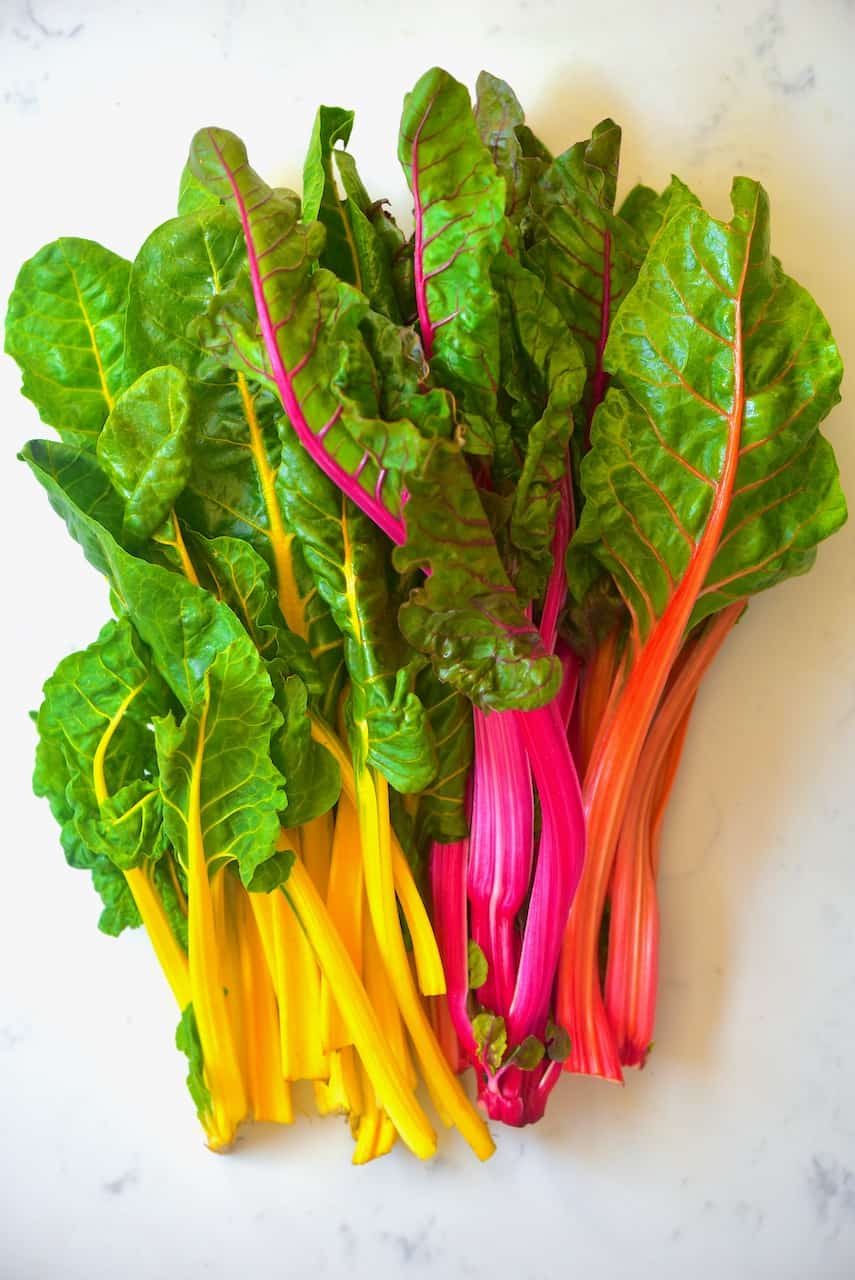
- Rainbow Swiss chard
- Basmati rice
- Tomato, parsley, fresh mint, chilli pepper (optional), spring onion (Did you know you can grow spring onion at home?)
- Olive oil, salt and pepper, cinnamon, lemon.
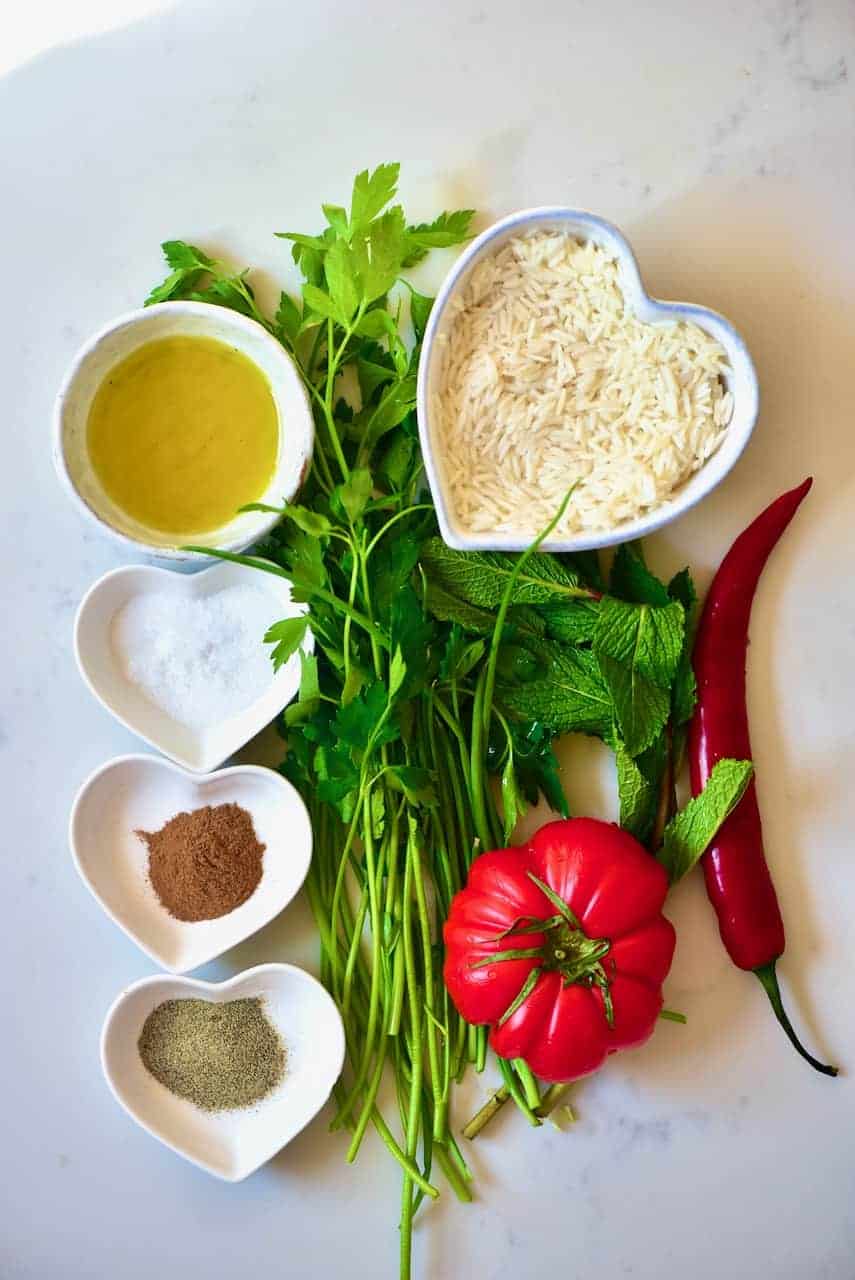
The Steps
Begin by soaking the rice in hot water for 30 minutes, then drain.
Get a few spring onion stalks. Or cut the green parts of your homegrown onions.
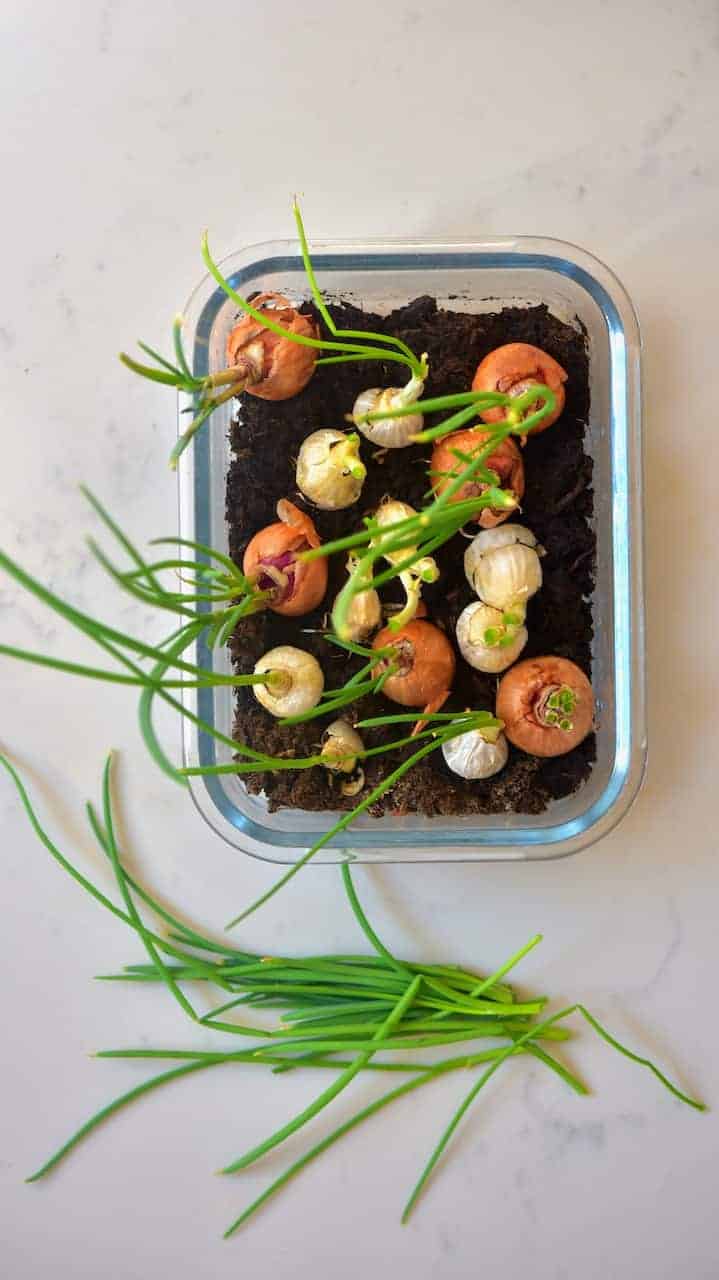
Finely chop the tomato, red chili, parsley, mint, and spring onion.
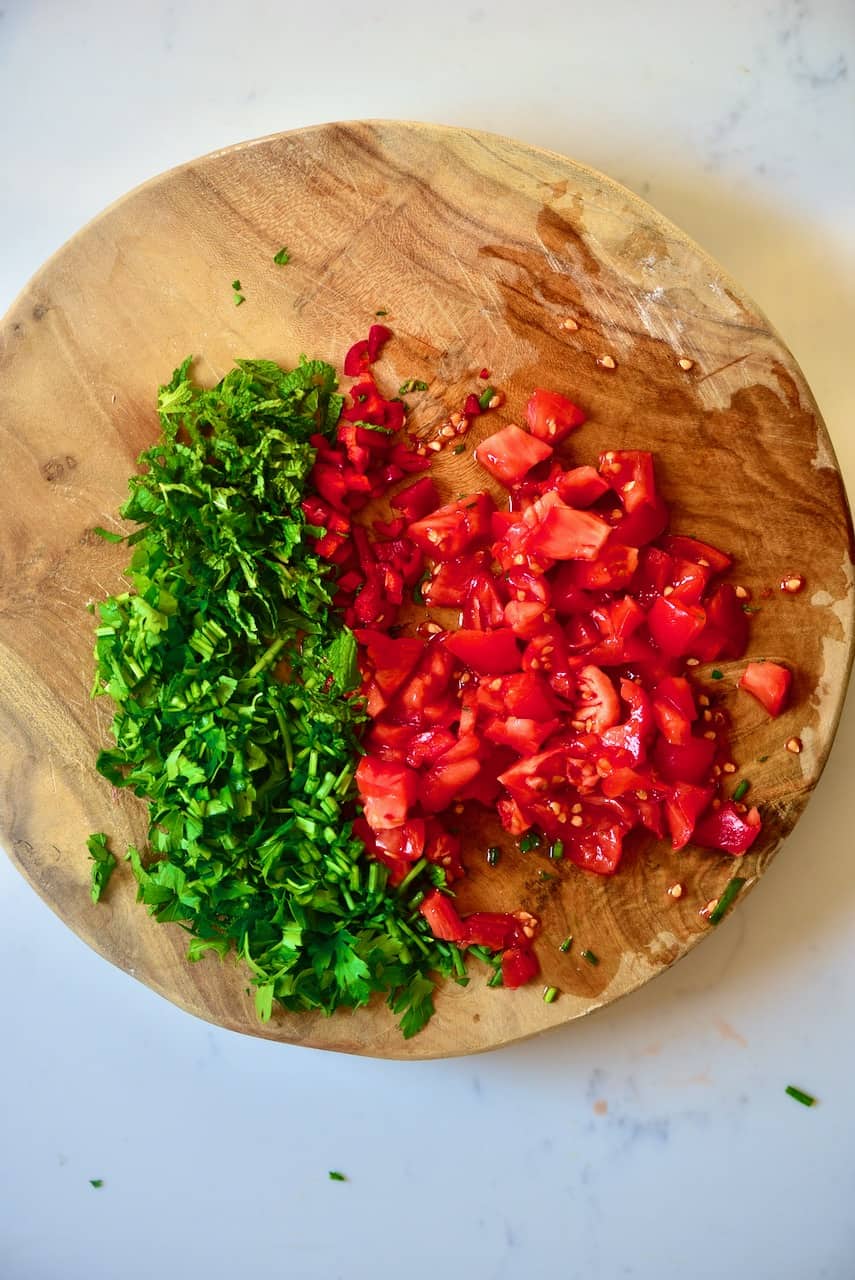
In a large bowl, mix the rice with the chopped ingredients. The tomatoes and spices mixed with the rice will make for a delicious tomato sauce effect when cooked.
Add the spices and stir well.
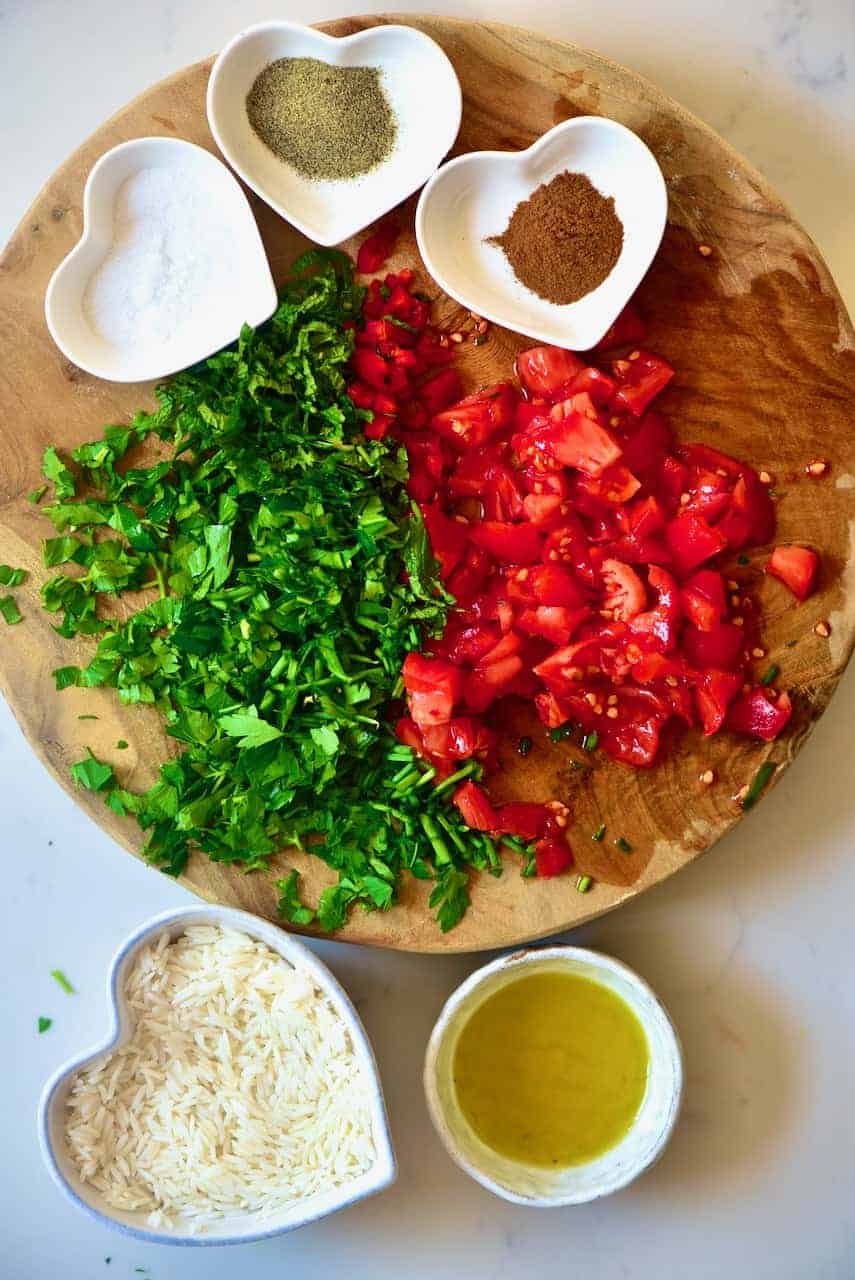
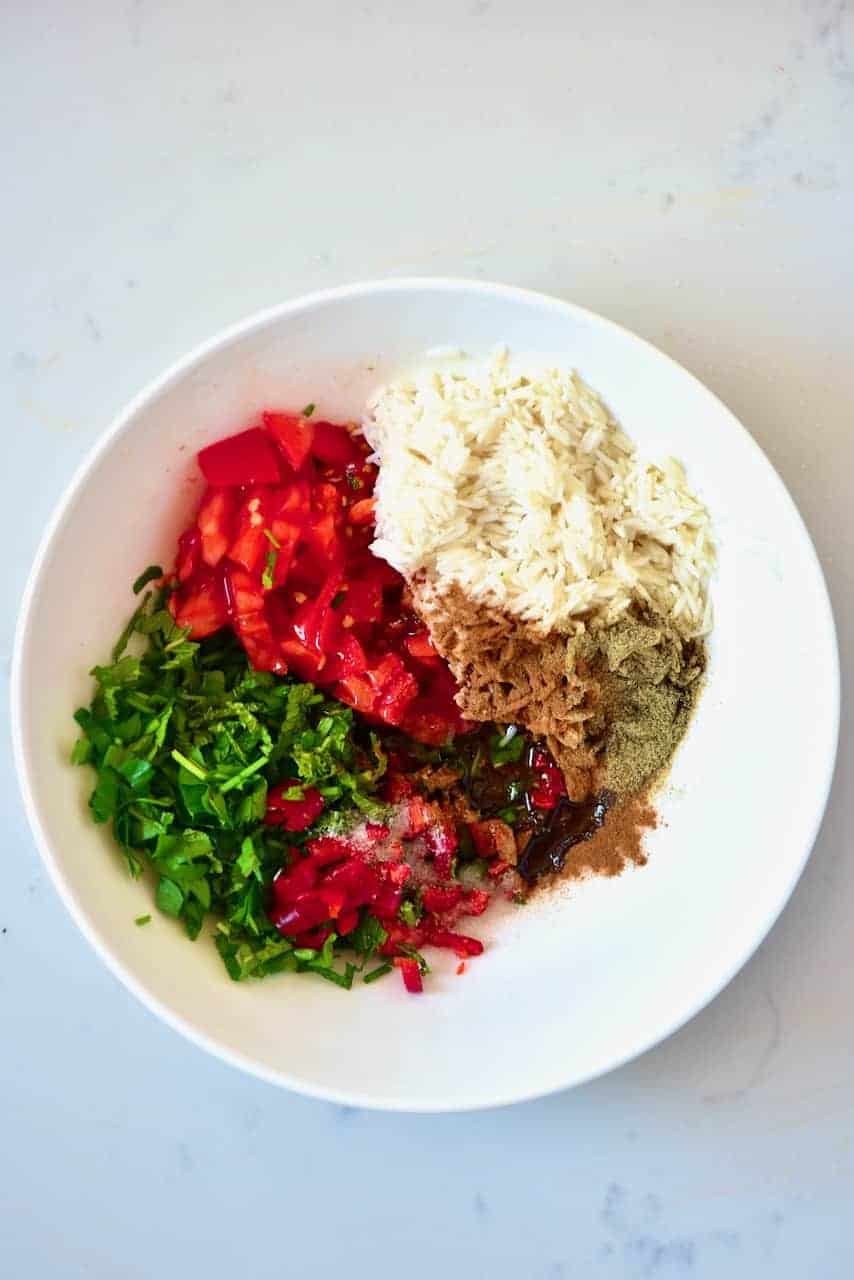
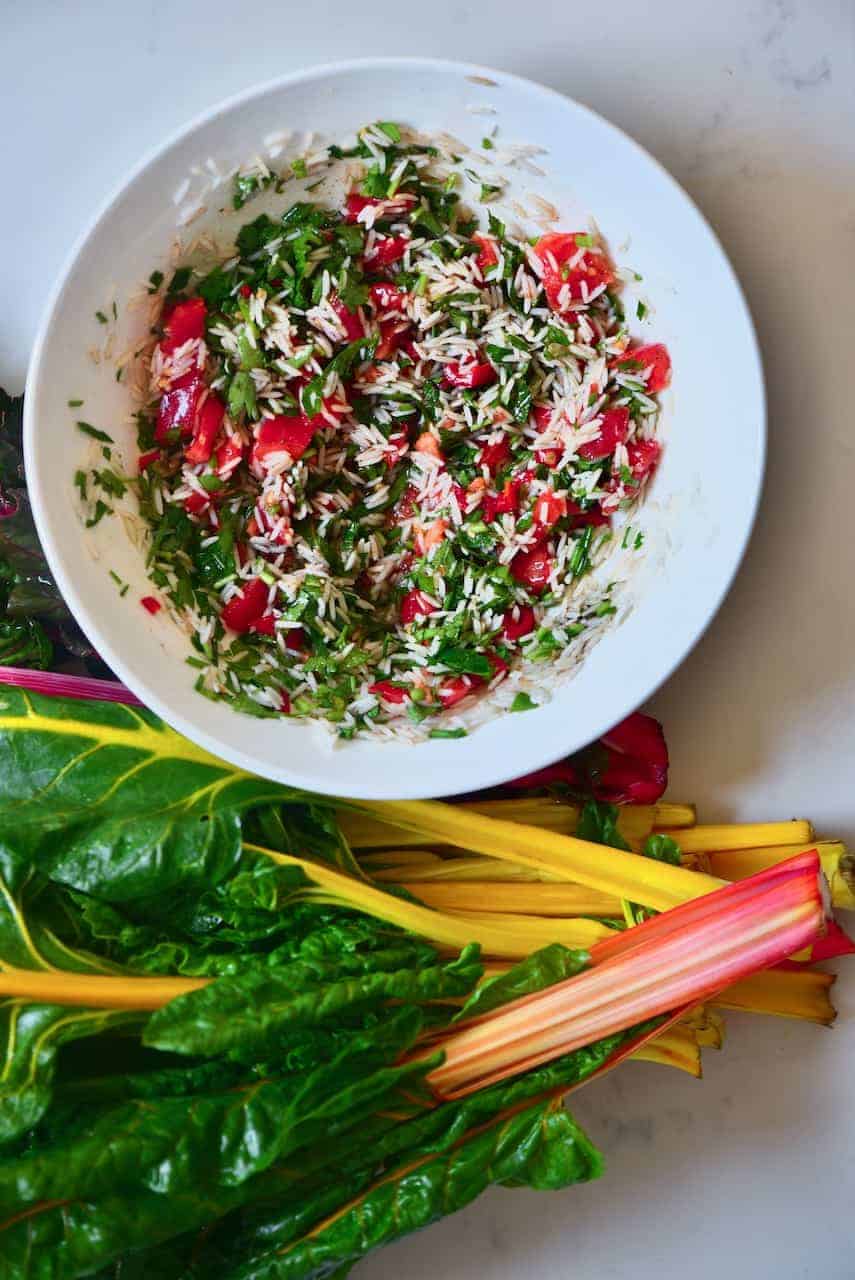
The next step is optional – depending on the chard freshness and how easy they are to roll (without breaking), you can blanch the leaves. When the leaves are younger, they are a bit softer, so easier to roll. However, we will still be cooking them later on – so this isn’t necessary if they roll fine.
If you decide to blanch them, then add the leaves to a pot of salted boiling water. Blanch them for 1 minute then quickly rinse them under cold water (or place in a bowl with icy water). Carefully drain them and pat them dry. You can use paper towels or a tea towel to absorb as much of the water droplets as possible.
Mine didn’t need blanching, so I just proceeded with the next step.
Lay each leaf on a flat surface. Cut off the stems and keep them.
Add a bit of the rice mixture to the center of the leave. Depending on the size of the leaves, add 1-2 tBsp. Adjust as needed depending on the size of the leaf.
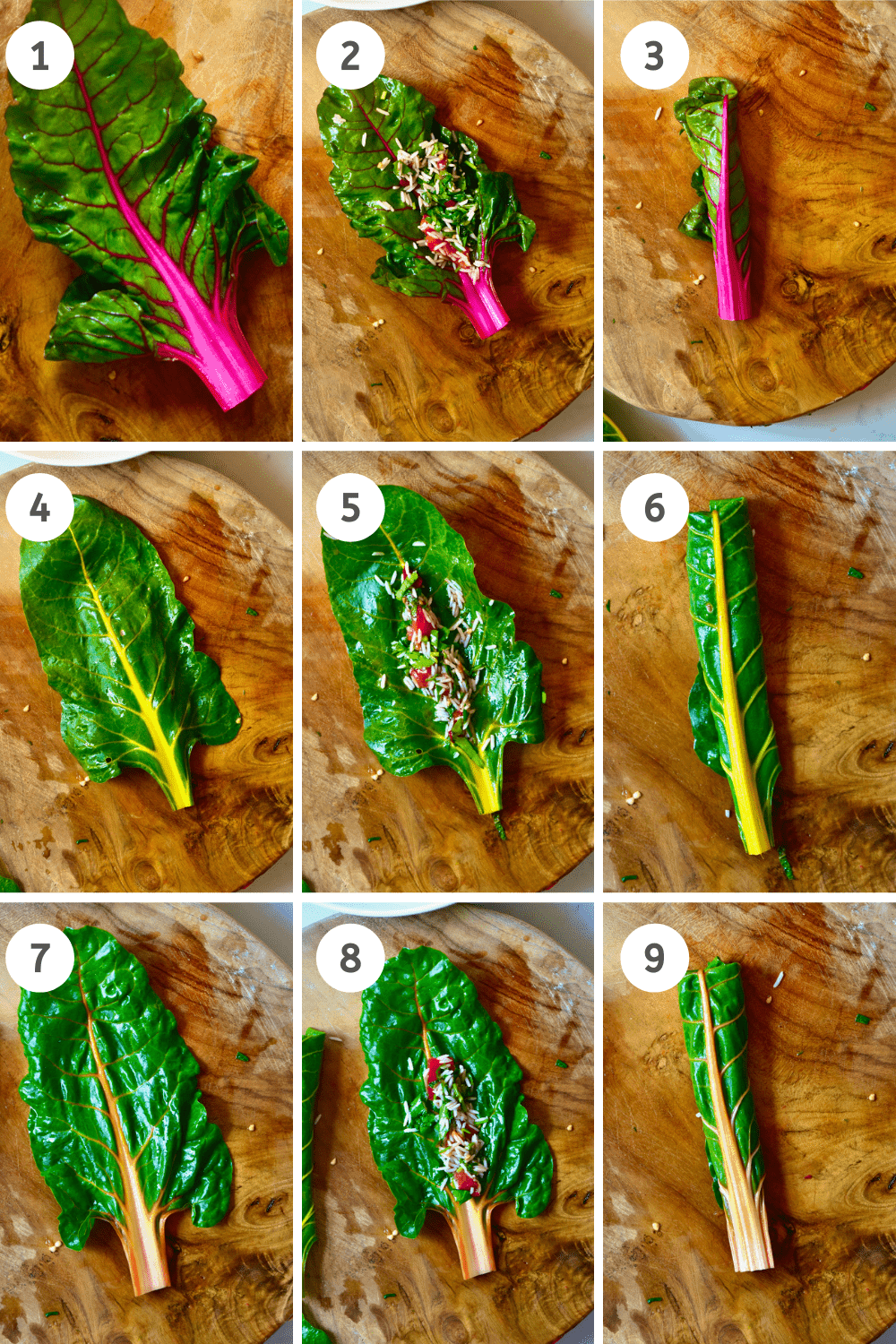
Bring the top of the leaf down then one of the sides of the leaf over the stuffing, then the other, and fold around the filling, creating a roll/parcel of stuffed chard leaf. You can see exactly how I do this in the recipe video.
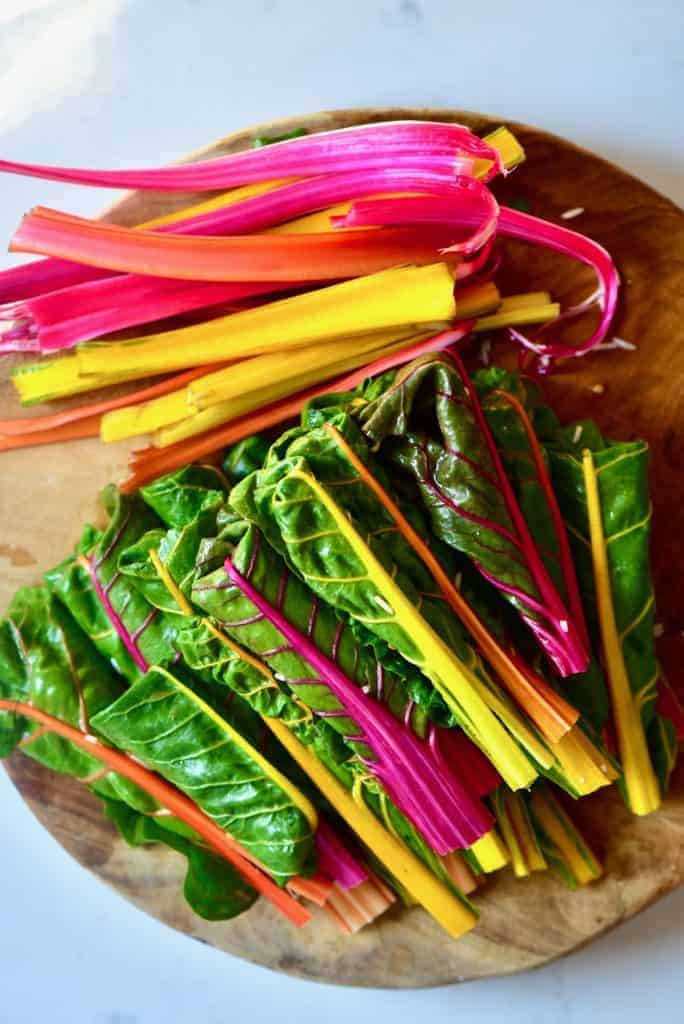
In a saucepan, either add the chard stems to the bottom or a sliced potato. The point is to raise the stuffed chard leaves, so they’re not directly on the bottom of the pot. These vegetables will also be edible, and chard stems are actually really nutritious.
Next, lay the stuffed chard parcels over the layer of chard stems/potato. Layer the parcels in the pot as high as needed.
Lay something (like a bowl, a plate or jar – see the video) on top of them to weigh them down. This will prevent the leaves from opening while boiling and also help them to steam more.
Cover with water, making sure the stuffed leaves are fully covered.
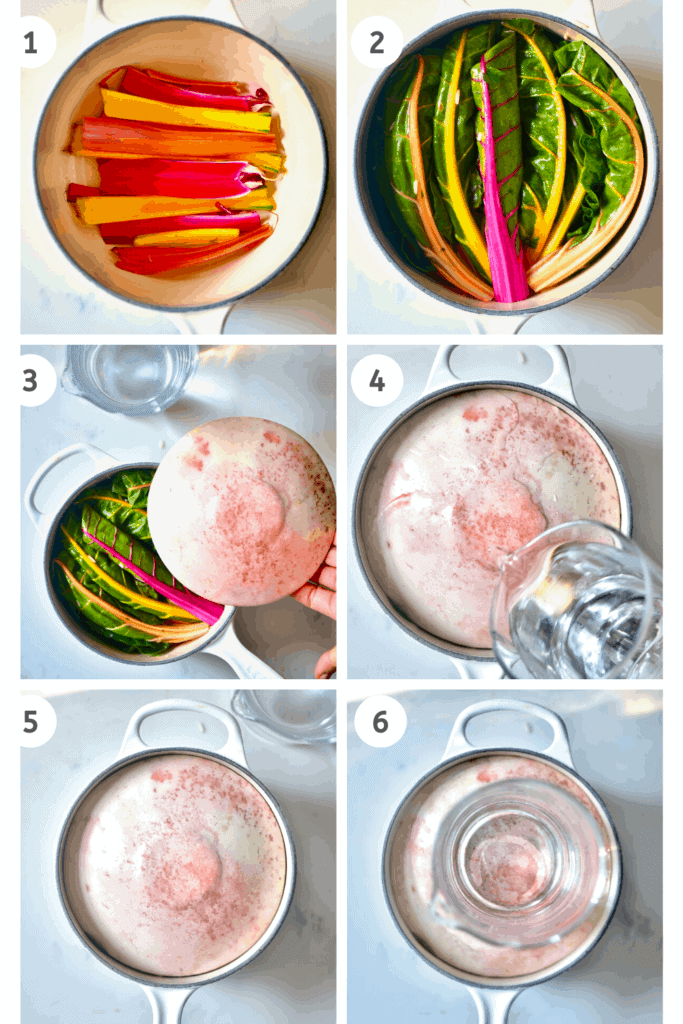
Bring to boil over medium-high heat and cook for about 20 minutes. Remove the cover/weight halfway and lower the heat to low/medium and simmer.
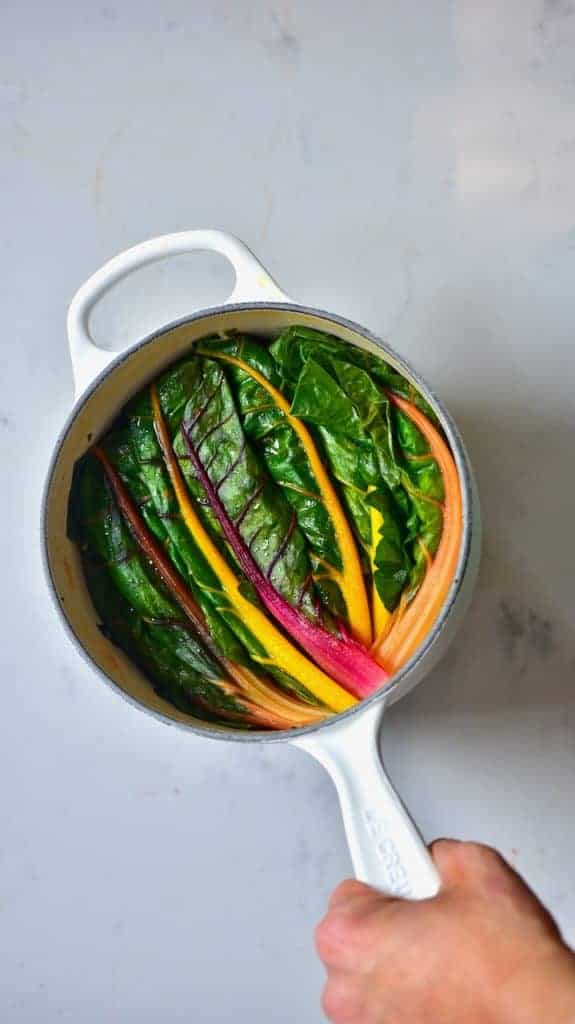
Once ready, you can serve the stuffed Swiss chard rolls along with some lemon juice, with some homemade pita bread or as part of a more substantial meal. They make for a great vegan dinner party dish or even part of a vegan thanksgiving spread.
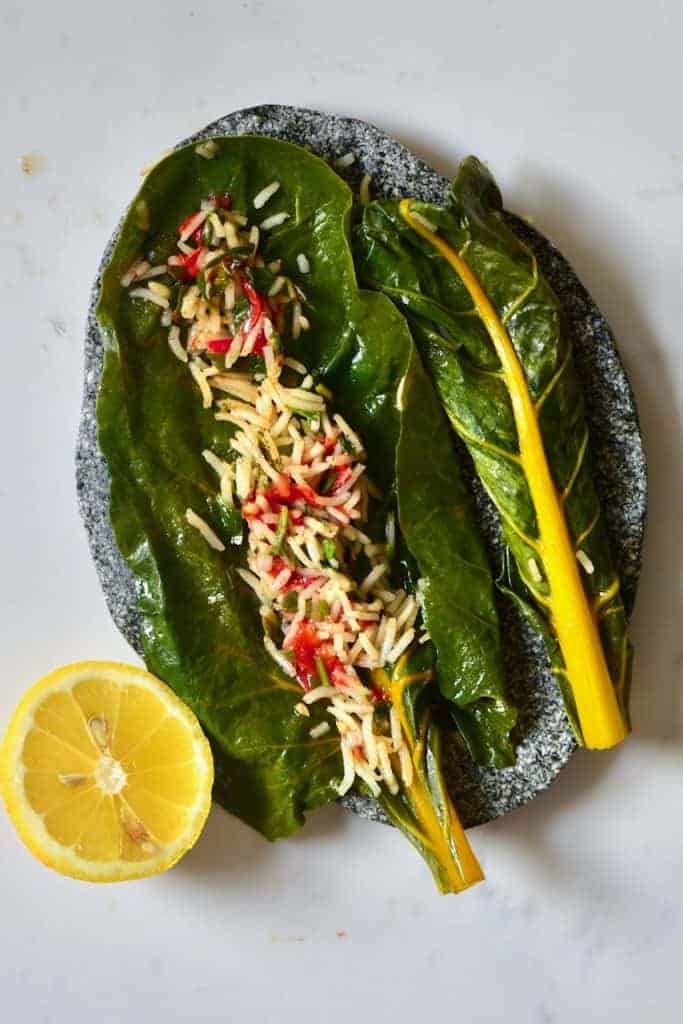
And, if you want more inspiration for pita bread fillings then you might like these Simple Stuffed Makdous (cured eggplant) or may want to make this authentic falafel recipe.
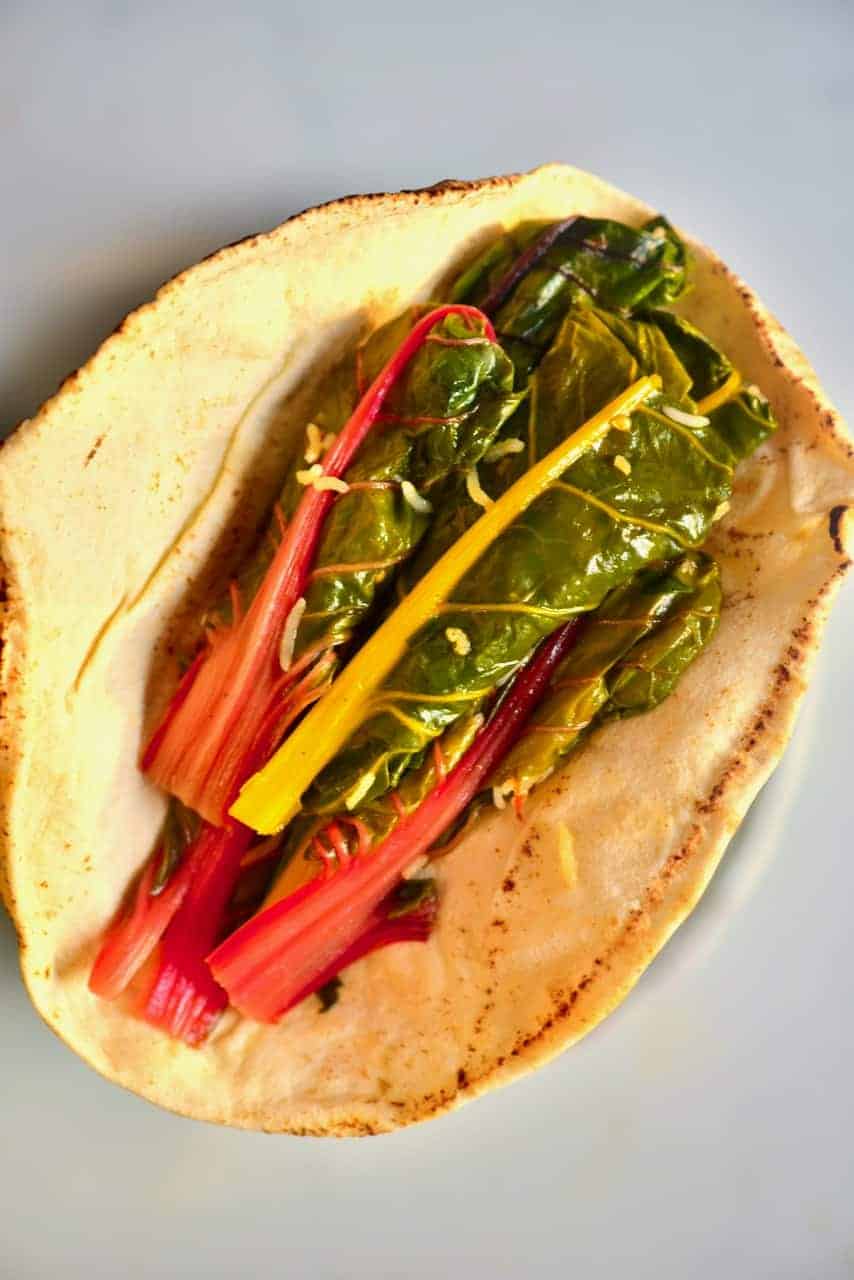
Other Simple Recipes You Might Enjoy
- Stuffed Cabbage Rolls
- Greek stuffed vegetables
- Crispy vegetable fritters
- Baked patatas bravas
- Simple Sauteed Swiss Chard Recipe
If you have any questions, leave a comment below. Also, I love seeing your recreations so feel free to tag me on Instagram @AlphaFoodie.
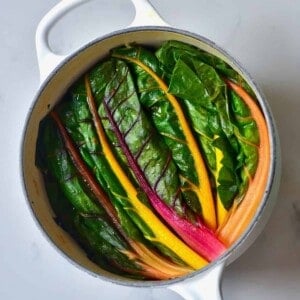
Vegan Stuffed Swiss Chard Leaves
Ingredients
- 1 large bunch of swiss chard
- 1 cup basmati rice
- 1 large tomato
- 2-3 spring onion stalks
- 1/2 cup parsley chopped
- 1/4 cup fresh mint leaves chopped,
- 1/2 chilli pepper optional
- 1/2 tsp ground cinnamon powder
- 2 tBSP olive oil
- 1/2 tsp salt
- 1/2 tsp black pepper
Instructions
- Soak the rice in hot water for 30 minutes. Then drain it.
- Finely chop the tomato, red chilli, parsley, mint and spring onion.
- In a large bowl, mix the rice with the chopped ingredients. Add the spices and stir well.
- The next step is optional – depending on the chard freshness and how easy they are to roll (without breaking), you can blanch the leaves. When the leaves are younger, they are a bit softer, so easier to roll. However, we will still be cooking them later on- so this isn’t necessary if they roll fine.
If you decide to blanch them, then add the leaves to a pot of salted boiling water. Blanch them for 1 minute then quickly rinse them under cold water (or place in a bowl with icy water). Carefully drain them and pat them dry. You can use paper towels or a tea towel to absorb as much of the water droplets as possible.
Mine didn’t need blanching, so I just proceeded with the next step. - Lay each leaf on a flat surface. Cut off the stems and keep them.
- Add a bit of the rice mixture on the centre of the leave. Depending on the size of the leaves, add 1-2 tBsp. Adjust as needed depending on the size of the leaf.
- Bring the top of the leaf down then one of the sides of the leaf over the stuffing, then the other and fold around the filling, creating a roll/ parcel of stuffed chard leaf. You can see exactly how I do this in the recipe video.
- In a saucepan, either add the chard stems to the bottom or a sliced potato. The point is to raise the stuffed chard leaves, so they’re not directly on the bottom of the pot. These vegetables will also be edible, and chard stems are actually really nutritious.
- Lay the stuffed chard parcels over the layer of chard stems/potato. Layer the parcels in the pot as high as needed.
- Lay something (like a bowl, a plate or jar – see the video) on top of them to weight them down. This will prevent the leaves from opening while boiling and also helping them to steam more.
- Cover with water, making sure the stuffed leaves are fully covered.
- Bring to boil over medium-high heat and cook for about 20 minutes. Remove the cover/weight halfway and lower the heat to low/medium and simmer.
Once ready, you can serve the stuffed swiss chard rolls along with some lemon juice, with some homemade pita bread or as part of a more substantial meal. They make for a great vegan dinner party dish or even part of a vegan thanksgiving spread.
Video
Notes
Nutrition
Nutrition information is automatically calculated, so should only be used as an approximation.










Love the simplicity of this recipe- I used kohlrabi leaves instead of chard, and they turned out amazing! Thank you!
Glad you liked it, Lesa!
I did mine with cilantro instead of mint, dried parsley instead of fresh, brown basmati instead of white, left out the cinamonn and I added carrots.
They were delicious!
Next time:
1. I will use less water. Maybe the chards in the States are more watery? I did as the recipe suggested and I had to take way too much water from the pot
2. I will coke some the brown basmati rice. Usually the brown rice takes a lot longer to cook than the white rice and I had to leave my chards steaming for 25 mins more than the original suggested 20. Even after 45′ some of the rice was undercooked. And I had left it soaking for 3 hours before starting!
3. Because I left the chards 45′, some of them were too flimsy and got disassembled when I took them out
4. I will use smaller chard leaves. Mine were too big and I couldn’t easily take out the rolls from the saucepan with the tongs.
Thank you so much for your comment. It’s great that you’ve adapted the recipe to your taste.